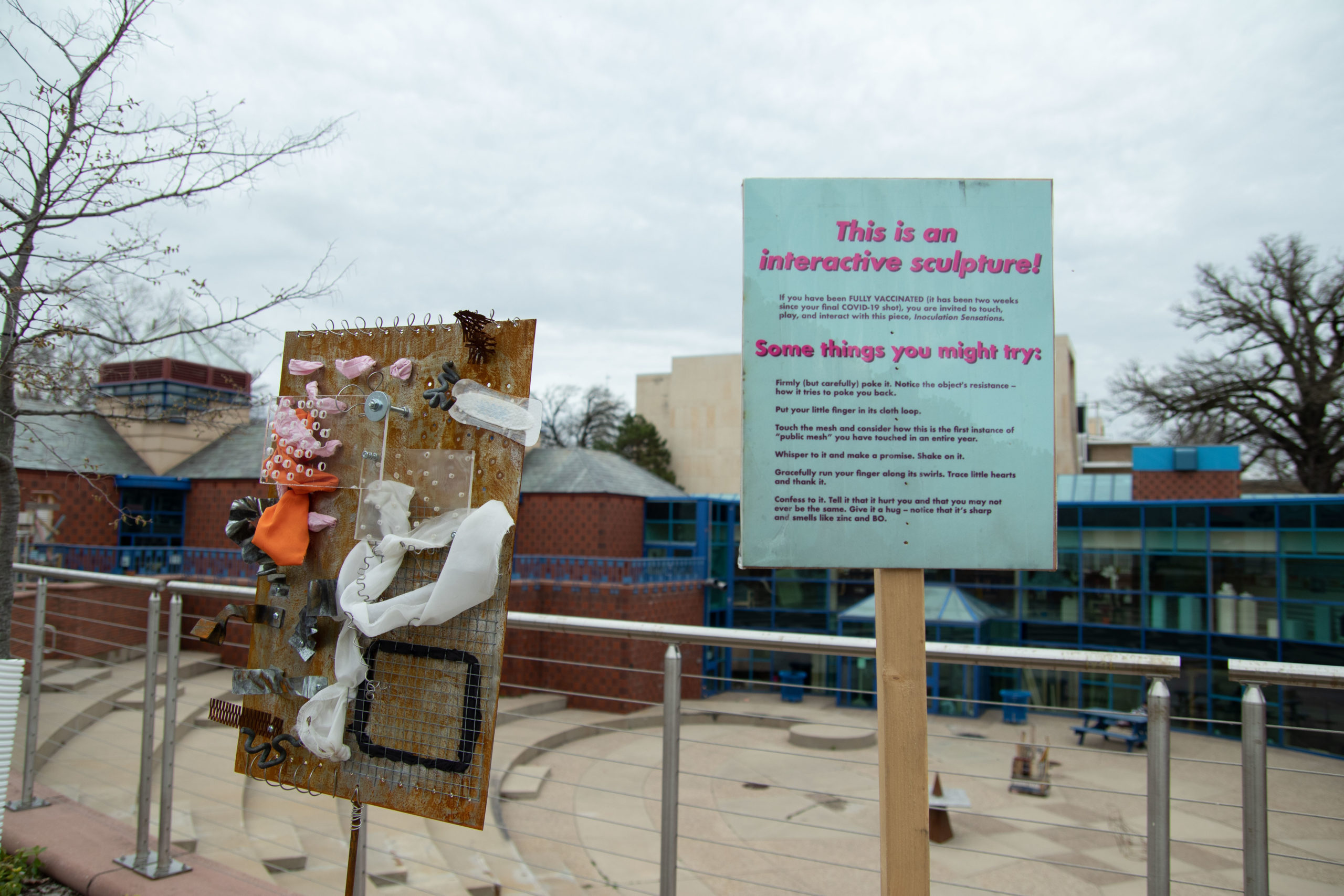Senior Carmen Magestro performed her senior recital virtually on April 10. Photo provided by Carmen Magestro. After the outbreak of...
I thought that my dream was quite humorous that night. In my sleep, I dreamt that I had contracted COVID-19, except Lawrence had no more quarantine space. So naturally, those with the virus isolated by camping out on Main Hall Green.
Sophmore Charlie Wetzel’s interactive sculpture InoculationSensations is located outside of Wriston Art Center. Photo by Pei Robins. “I’ve had both...
Dear Editor,
We need to talk about Kimberly Barrett.
Due to her e-mail regarding radical respect, some of you have started to see Dr. Kimberly Barrett’s deep flaws as the Vice President of Diversity and Inclusion. Some of you are just starting to hear about her and her position.
Laurie Carter will begin her new role as president of Lawrence University on July 1. Photo provided by Shippensburg University. After...
A member of LU-SDS passes out flyers for their cause at a mutual aid event on April 3. Photo by...
Photo provided by Lauren Kelly. Pets are such a big part of our lives, but do you ever guess what...
Lizzie sat in the front seat of her mothers SUV, habitually tugging her hik- ing shorts up and down her...
From the founding of Lawrence University to President Mark Burstein, the university has largely consisted of a white administration. Lawrence...
Spoken English, like most languages, makes great use of semantic and pragmatic vowel length. It is not phonemic, meaning that the word you are saying will not become a different word if you lengthen one vowel, but it’s clearly a part of the way we communicate because most of us actively represent it when we text. In most writing systems, a long vowel is represented by emphasizing a vocalic sign, whether it is a glide consonant that stands for a vowel—such as in Abjads like Hebrew, most Aramaic varieties, and Arabic (these letters are called matres lectionis) — or a character that represents a vowel itself — which is either repeated or somehow embellished with a diacritic or other mark, as is the case in most Roman-based orthographies.





